Your Cart is Empty
22% off Automatically at checkout when you spend $5 of more!
22% off Automatically at checkout when you spend $5 of more!

Why I Quit Teaching After School Yoga Classes
by Lara Hocheiser December 12, 2019 5 min read 1 Comment
A Reclamation of Childhood, Joy, Movement, Self-expression, Love, and Trust
By Lara Hocheiser
Founder of Flow and Grow Kids Yoga, author, educator, and early childhood specialist
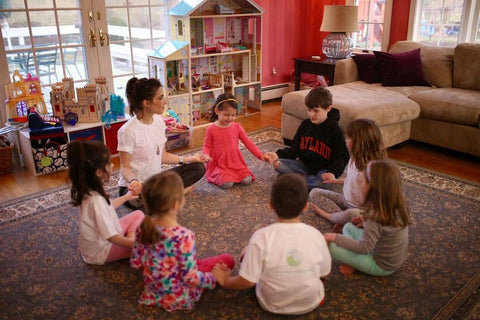
If you go into any kind afterschool program for children ages 4-8, you will see some commonalities. The kids are asking to play, begging to act and pretend, wiggling, laughing and what might seem like the behaviors quite opposite of what a yoga class is trying to be.
For so many years I’d try to make these after-school classes appear like “real yoga,” by insisting we do lots of poses on our mats.
What I knew after more than 9,000 hours teaching enrichment yoga and mindfulness is that real yoga happens when children can be themselves, connect to the material (i.e. how is this relevant to them?) and when they can have the freedom to play.
Well, despite knowing this is how the students thrive, I struggled to allow myself to offer this kind of program because I wanted to look like a real teacher.
I became a real teacher this year, in my 17th year in the classroom by stepping back and allowing the kids to lead. By accepting that they need to have dynamic experiences and letting go of the appearance of yoga. By letting them act, play, laugh, and create!
Now I offer project and play-based yoga and mindfulness steeped in self-inquiry and self-expression. This is what an afterschool class looks like now.
3:25 I pick up the first group of children ages 6-8. My room is set up with the materials for the experience, project, or art activity of the day. They walk in and see the objects related to the exploration and get excited. “Miss Lara, what will we do today?” “Are we going to do another eating meditation?” “Can we make meditation jars for our families?”
With the palpable excitement, we head to the mats. We clear our minds with a student-led meditation. They have all been with me for 2-4 years by now. I have known them since they were not even 4!
One child rings the chime. Another helps us to drop in. “Please sit in your yoga seats. I am waiting. Thank you. I notice Wynter is sitting tall in her yoga seat. Thank you for showing me you’re ready.”
I can’t even believe my ears as my own words are echoing out of the mouth of an 8-year old yoga practitioner.
Then the bargaining starts.
“Miss Lara, can we start the project now, have free time,then do yoga?”
We come up with a schedule for the hour together. How much time will be allocated to the project? How many weeks will it take? How will we make sure we understand and experience the meaning of today’s lessons? We talk about it like we all matter and our opinions all have merit.
Once we agree on how to spend the time, the timer comes out. We head to the tables and start the activity of the day. We have done glitter jars with color experiments. We have done gratitude activities, where we write what we are grateful for each of our loved ones AND make a dedication to them. We have done yoga journals, a month-long meditation on our home practices. Students color and author their books, each detailing how to do the yoga poses they love, mediations they most need, and mantra that help them feel centered.
When the big kids and little kids arrive, they are also hyped. Miss Lara, we saw the 6-7’s and 7-8’s walking by with their journals. Can we take ours home today, please????” It’s now 4:30 and the 4-6-year-olds are visibly wild.
Getting them to drop in isn’t as easy because 1) it’s late 2) they are younger 3) they have much less yoga experience.
So we use movement scarves to show the movement of breath. We walk the perimeter of our mats to notice where our bodies will be safe and to help develop the sense of self in space (proprioception.)
This group always has so many questions. I try to slow down to answer them all, sometimes 3 and 4 times, before getting into the class routine.
These guys love to domindful eating more than anything. Since it’s a farm to table school, there are usually lots of interesting fruits to try. If we use our senses in one of these kinds of meditations, then we can get focused enough to learn and play. They love to create in this group. We often learn the poses of the day, cut out the images of them, and arrange them in order. Then we try to test our memories by doing them in order without looking.
It’s really fun to assign numbers to the poses and to poses and do simplemath and sequencing.
These students are so so so sweet and when their parents come they run up to hug me and talk about how special doing yoga is to them. “Mommy, look this is my yoga book. This is me (pointing to an illustration) doing tree pose and this is the tree pose (pointing to the images I provide them.)”
The act of gluing and cutting is a huge deal to these kids. They absolutely love creating and expanding ideas this way.
Questions I ask:
- Can you glue them in order?
- Will you teach them to your siblings at home?
The coolest part is when the kids come back to connect the ideas we have learned through play and projects. “Miss Lara, we did mindful eating at dinner and my daddy forgot to chew slowly. He is silly. So we slowed down and tried again. It was so cool to taste the turkey! He said I taught him something!”
The children have a vested interest this year in the yoga and mindfulness activities. Last year I was constantly wrangling them. “It’s time to come to your mats. I am waiting for you to listen to.” This year its joy for learning.
I didn’t mention how we structure free time. Whenever possible we include 5-15 minutes of choice time. Do you know how the students spend it? ACTING! They love to perform mini-dramas. They are so creative. I have harnessed this creativity to start preparing them for the culmination activity we will perform for the parents: Acting out what yoga means to us!
By observing them and allowing them to be free, I was able to tap into what matters to them. And guess what? Dramatization is children processing the world and embodying it. They can act out the many things we are experiencing in yoga if you ask them to splash their play with these ideas.
My hopes for you, enrichment teachers is:
- You drop trying to teach and allow there to be a mix of teacher and student-led learning.
- You stop asking them to listen and allow them to speak
- You allow classes to be fun, expressive, joyful, contemplative, deep, slow, and unique.
- Bring the lesson plan and sometimes let it go if you need to!
- Let the students show you what matters to them and incorporate it
- Allow time for movement and play that has little to do with your topic
Then, when you want to teach them something important, their minds and bodies will be ready to take in the information.
Our content has real children in mind. The lesson plans follow a methodology that is proven to work with kids. The special activities let kids explore ideas and movement in a way that is playful, profound, and natural to them. Please help support our small business by investing in our beautifully designed content that WORKS and is proven with children all over the world.
1 Response
Leave a comment
Comments will be approved before showing up.
Also in Kids Yoga Blog

How Social and Emotional Learning and Yoga Help Kids Breathe Through Big Emotions
by Kane SEO April 21, 2025 4 min read
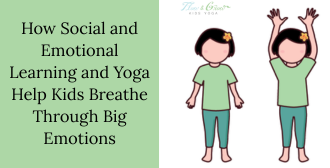
How Social and Emotional Learning and Yoga Help Kids Breathe Through Big Emotions
by Kane SEO April 14, 2025 4 min read
In classrooms and communities around the world, educators and parents alike are placing a growing emphasis onsocial and emotional learning. And for good reason: helping children understand, manage, and express their emotions in healthy ways is just as critical as teaching them to read or do math.

Power of Yoga for Kids: How It Helps Them Grow, Focus, and Thrive
by Kane SEO March 25, 2025 5 min read
In today’s fast-paced world, children are often exposed to stressors from a young age, whether it’s academic pressure, social challenges, or the overwhelming influence of digital devices. This can impact their physical, mental, and emotional well-being.
Ultimate Kids Year of Yoga Bundle
bundlespricey-contentdigital-resourcesearly-childhood-yoga-mindfulnesselementary-yoga-mindfulnesskids-yoga-resourcesmiddle-high-school-yoga-mindfulnessseasonal-yogayoga-cards
Ultimate Kids Year of Yoga Bundle
5 reviews
5.0 / 5.0
(5) 5 total reviews
$45.00
Ultimate Kids Year of Yoga Bundle
5 reviews
5.0 / 5.0
(5) 5 total reviews
$45.00
Kid’s Sun Salutation Yoga Cards
digital-resourcesearly-childhood-yoga-mindfulnesselementary-yoga-mindfulnesskids-yoga-resourcesliteracyunder-15yoga-cards
Kid’s Sun Salutation Yoga Cards
3 reviews
4.33 / 5.0
(3) 3 total reviews
$10.00
Kid’s Sun Salutation Yoga Cards
3 reviews
4.33 / 5.0
(3) 3 total reviews
$10.00
Yamas and Niyamas: Successful Relationships with Self & Others (tweens and teens)
pricey-contentdigital-resourceskids-yoga-resourceslesson-plansmiddle-high-school-yoga-mindfulnessmindfulness
Yamas and Niyamas: Successful Relationships with Self & Others (tweens and teens)
2 reviews
5.0 / 5.0
(2) 2 total reviews
$49.00$55.00
Yamas and Niyamas: Successful Relationships with Self & Others (tweens and teens)
2 reviews
5.0 / 5.0
(2) 2 total reviews
$49.00$55.00
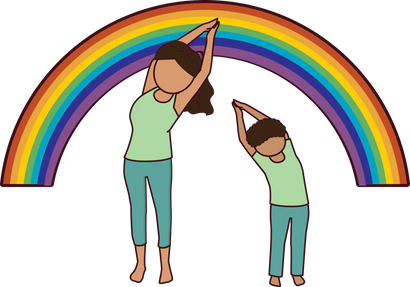


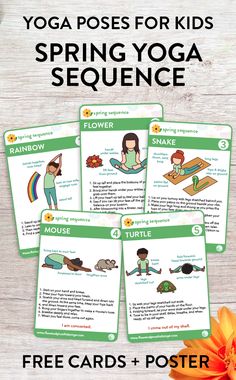
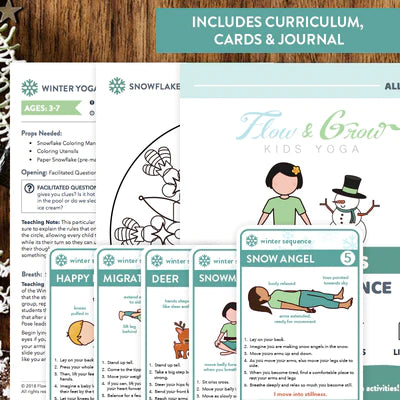
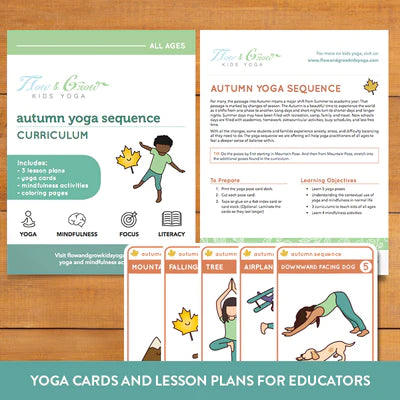









Deborah
December 07, 2022
I just love the ideas. Can you chare any ideas for junior high age students? I just received my 200 hour cert and would like ideas for that age group to incorporate into a yoga club